Pangaia’s Down to Earth Strategy
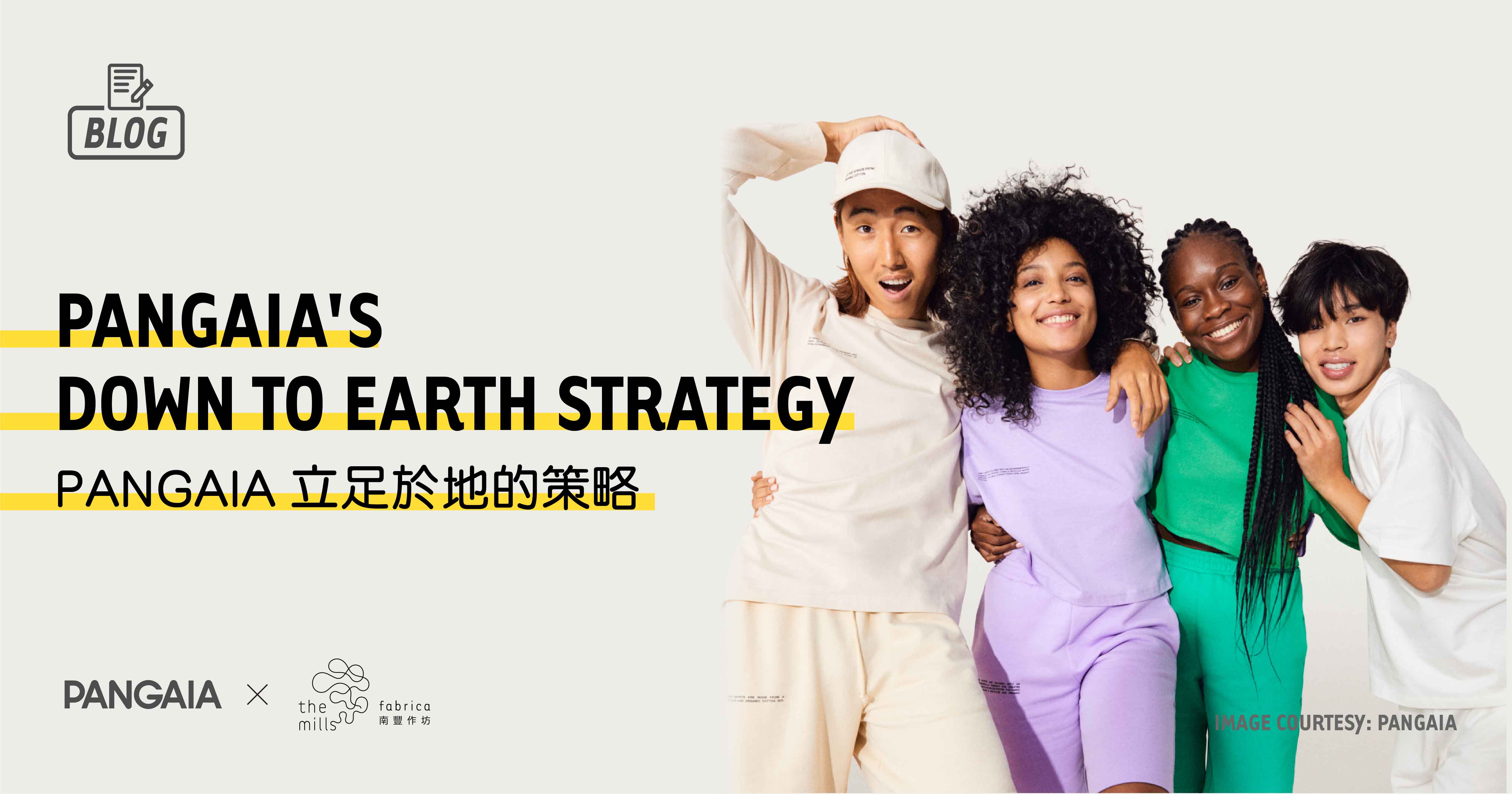
Founded in 2018, Pangaia is the apparel brand that has taken the world by storm with its ‘better for the planet’ ethos, playful branding and colourful products. Dropping new collections and colourways, their sought-after garments encompass innovative, science-based textiles with purpose. In just 3 years, the company has seen exponential growth, with over 830,000 followers on Instagram and generating $75M in revenue in 2020 alone. But beyond all of that, what is the secret to successfully captivating their market?
We speak to Dr. Amanda Parkes, the Chief Innovation Officer of Pangaia to find out more. With a PhD & Master of Science in Tangible Media from the MIT Media Lab, a Bachelor’s in Mechanical Engineering and another in Art History from Stanford University, Parkes is a fashion scientist and entrepreneur with over 15 years of experience in material and product innovation previously heading up research at Future Tech Lab, and founding roles at Skinteractive Studio and Bodega Algea, a microalgae biofuels startup.
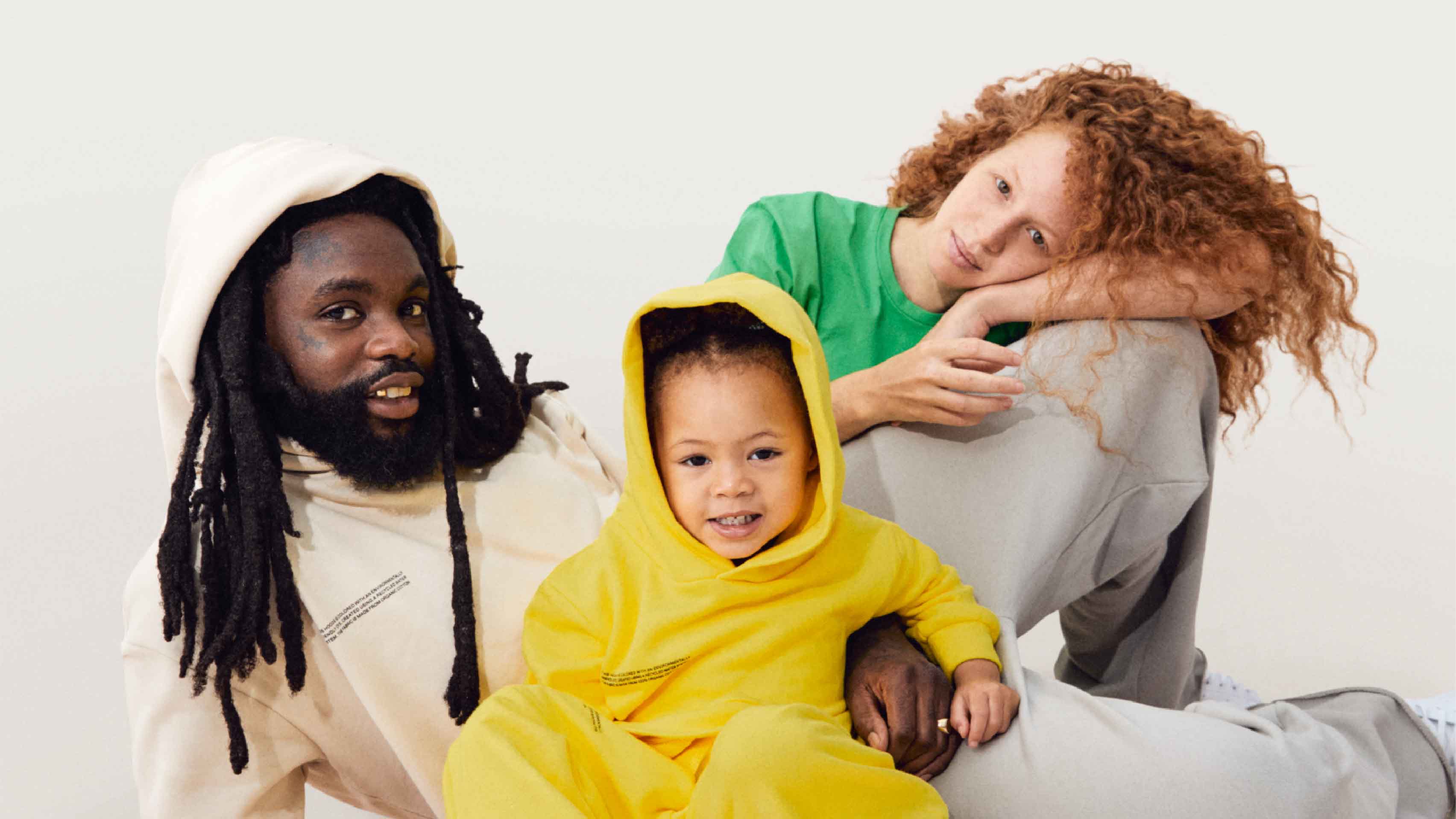
Pangaia Family Campaign; courtesy of Pangaia
Q1: Pangaia is first and foremost a materials science company. How do you translate the science into messaging that is accessible and relatable to your everyday consumer?
We’re deeply rooted in nature and our material philosophy is what we call ‘high-tech naturalism’ – where there is abundance in nature like waste, agriculture and infusing them with new sustainable processes, materials, and chemistries to increase their functionality. It’s taking the best of nature and augmenting it. We don’t shy away from explaining the science. It is a delicate dance – we don’t want to hide from the more technical terms [nor] overwhelm the consumer.
When you’re doing a form of learning you want to put messaging at different levels of accessibility. So, something that can grab a kid[‘s attention] or someone who is just walking by and noticing a Pangaia ad, all the way up to somebody who’s really interested and wants to dig in deeper. There’s no greenwashing or marketing language in what we’re trying to write in the science, but we also make the stories accessible in beautiful visuals that all relate back to nature.
‘Pan-gaia’ literally means all-inclusive, Mother Earth. We’re talking about everything in nature; the biocycles and the bioeconomy. From a deeper perspective we’re addressing the values of who we want to be as humans. That’s also a lovely reference point – that everyone has a particular relationship with nature.
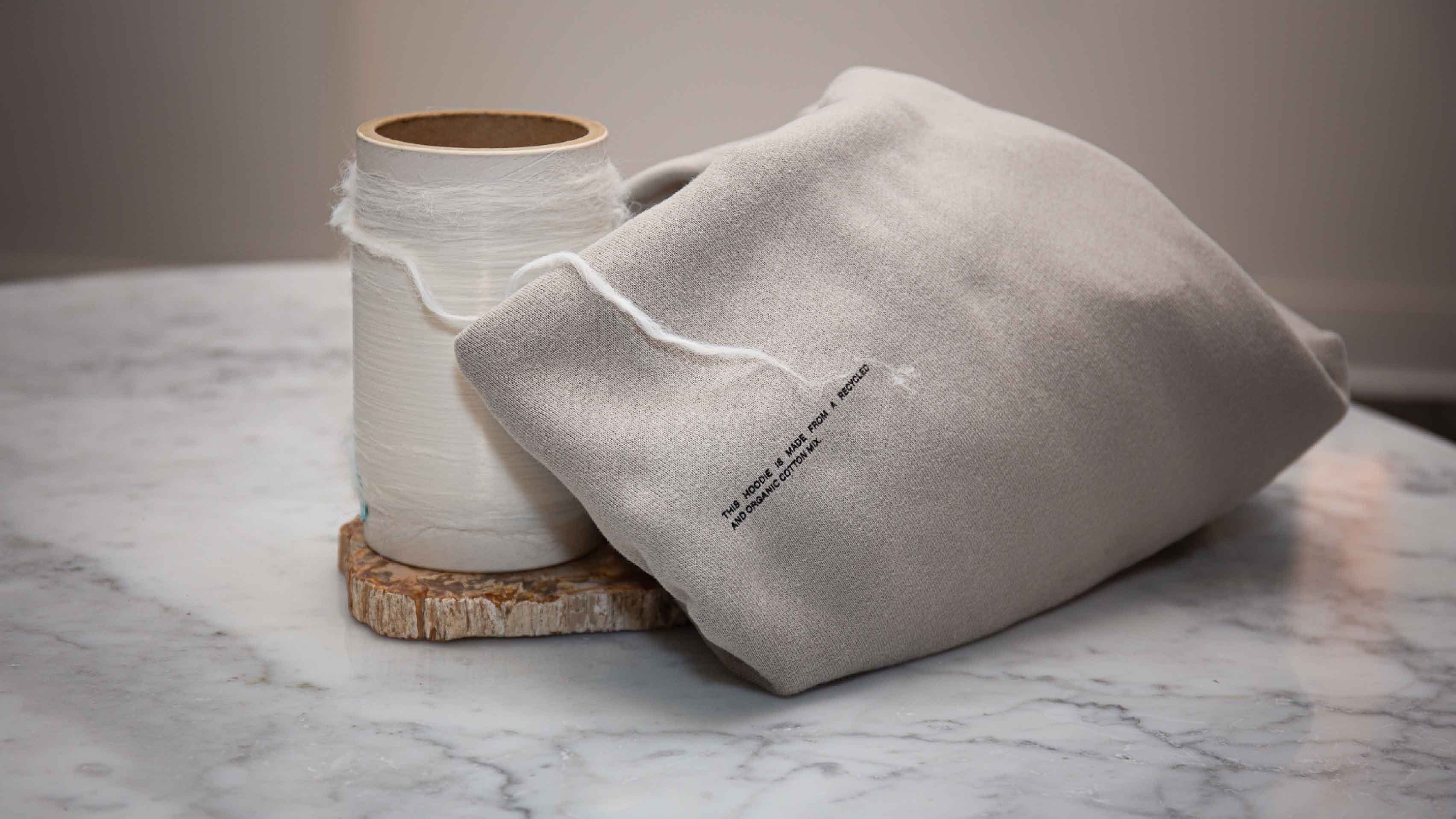
Pangaia x Kintra Fibers; courtesy of Pangaia
Q2: Having very quickly established itself as a successful B2C brand, can you tell us about the scope of opportunities you envision for the B2B side and how it plays into the company’s overall strategy?
We have a unique business model for a fashion company. Not only are we innovation and research-driven we’ve been focused on direct-to-consumer because that illustrates [how] these new materials can be produced commercially. But our whole point was never to have exclusivity, we also want other brands to expand their sustainable materials, which helps everyone along the supply chain win.
For example, our latest partnership with Kintra, a new bio-based and biodegradable alternative synthetic [that] behaves literally like a nylon or polyester. I think that [it] ticks off so many niche things that I’ve been looking for – there is no existing fantastic solution for that.
FLWRDWN™ (a patented alternative to traditional goose-down) also serves a niche. When people think about the goose-down industry, it has a lot of ethical issues with how animals are treated but then when you go to a vegan solution, they’re always full of synthetics and fossil fuel-based materials which indirectly harm all plants, animals and humanity in just a different way. So, it’s thinking how do we find these solutions which satisfy a hole in the market without compromising on functionality?
That’s one of the biggest things that we’re working towards, how do you make the materials just as good or better. [This is] where the high-tech part comes in when you start to think about the new bio fabrication, growing mycelium leather [or] bacterial dyes, all of those technologies which are coming as fast as they can be scaled across many different companies and startups. It’s such a breakthrough in terms of sustainability and how you can actually for example, just use the bacteria to attach the dye to a fabric. That is just an inherently beautiful way to utilise the biology and not have to add extra toxins. So, the reward of really putting in the time and the effort, in biotech or process technology, will pay off in the end.
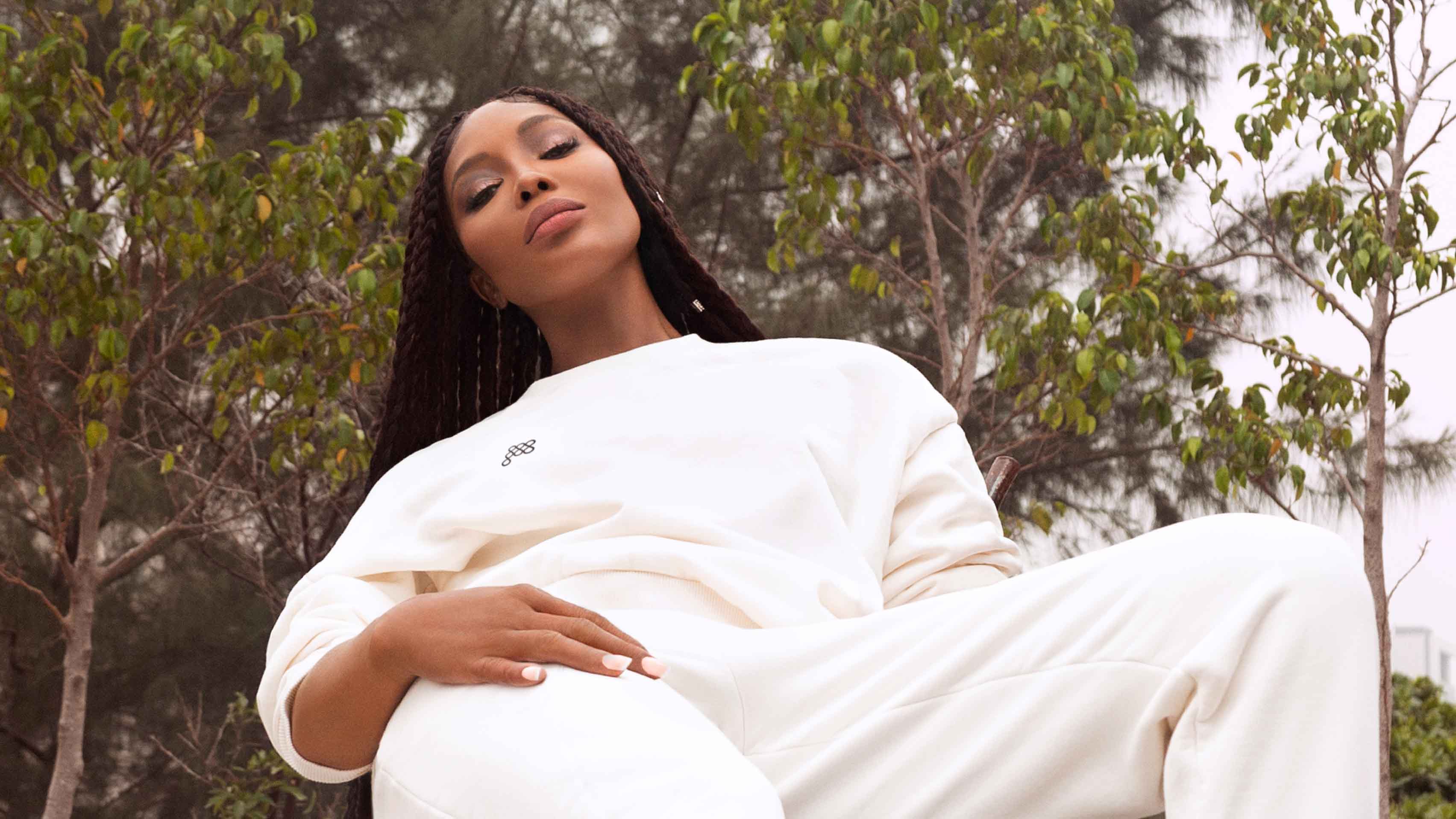
AIR-INK®; courtesy of Pangaia & Jenke Ahmed Tailly
Q3: Can you give us a sneak peek into some of the new materials and product launches that you’re currently working on?
We’ve launched our new partnership with AIR-INK® which is a pollution ink. The company collects soot, a pure, black carbon [that] is characterized, cleaned, filtered to be non-toxic [before] it can be encapsulated into an ink for printing. We have a new capsule collection where all of the writing on our garments will be made from this ink. Right now, it’s a small capsule but we are expanding that – it’s fully scalable and this is our first test with the material and it’s going really well. We’ve incorporated it into our production facilities in Portugal, [having] gotten through all the EU regulations which is no small thing to import something that is pollution-based technically from India into the EU and have it be a safe product. It’s a whole new material category [and] conversation about keeping the regulation up with the science. So that’s one thing that we’re super proud of.
We have some new textiles coming out that are blends of agricultural waste fibers. This is part of our move to find alternatives to traditional and even organic cotton. There’s nothing inherently wrong with [cotton] as a crop, it’s wonderful as a plant and fiber but we’ve over-industrialized the farming, using so many pesticides that’s completely damaging to land and it’s just a totally unsustainable way that we’ve been growing it, so any time that we can utilize alternative plants and agriculture, we start to create resiliency in our supply chains. We [also] have C-FIBER™, our seaweed line of textiles and this is really the [first] expansion into the agricultural waste domain.
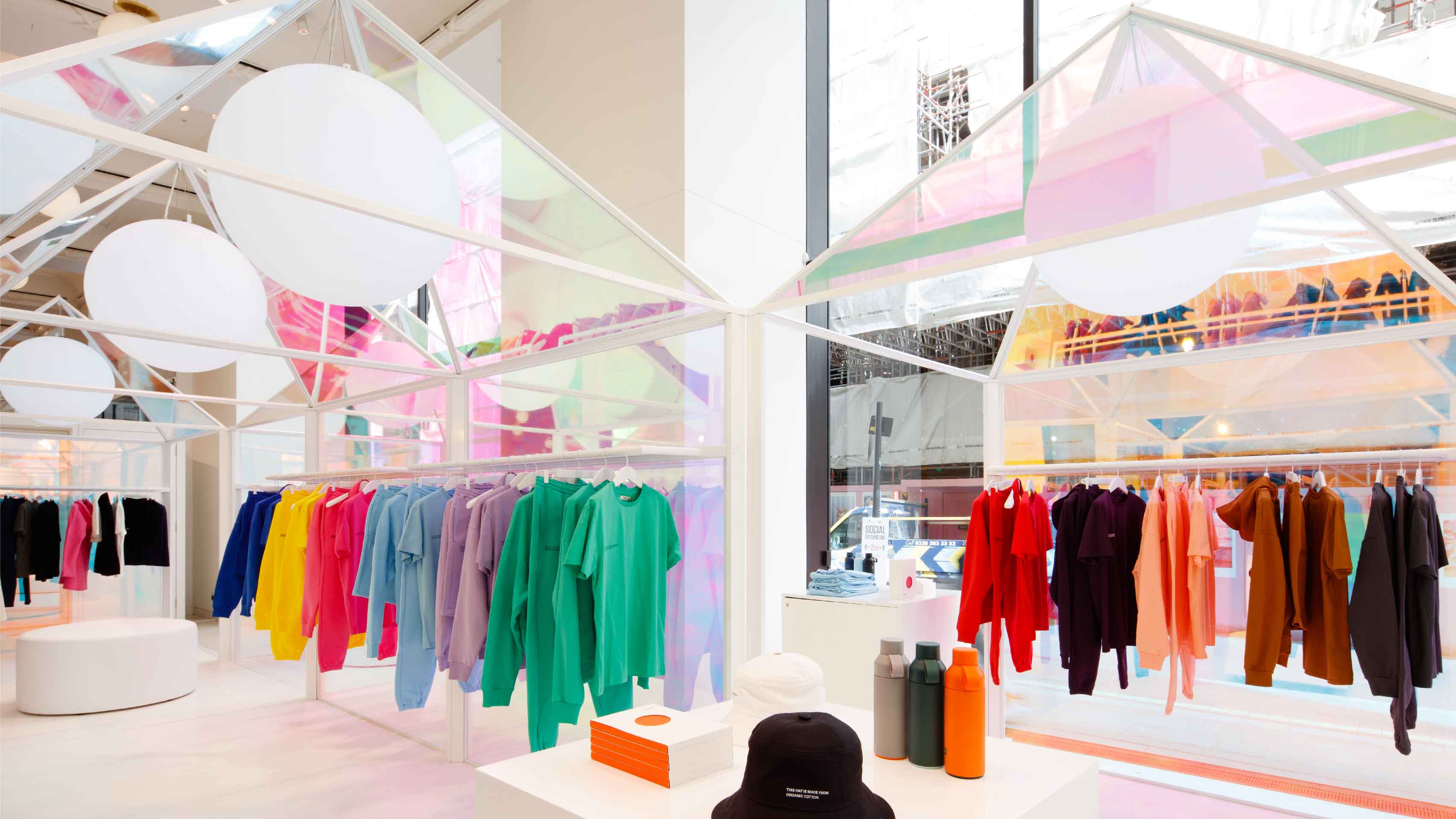
Pangaia x Selfridges Interactive Pop-up; courtesy of Pangaia
Q4: You’ve recently launched your first-ever pop-up in Selfridges. Can you share more about the inspiration and thought process that went into creating that concept and retail experience?
I come from a science lab and science museum design background, so it was pretty close to my heart to bring the aesthetics and tools of the lab into the space. This is the idealized fashion version of a biolab and [one of the] ways we think about accessibility. [It] is part of how we convert nature into product, and we really wanted to open up the idea of the lab as something that is accessible. We feel, as a culture we’ve become very removed from the processes of how things are made and it’s important for people to understand – we offer that kind of transparency in order for people to make the [right] kind of decisions.
We are direct-to-consumer but even with lockdown over the last year it’s been even harder because [retail] is a true differentiator. We get a lot of feedback from customers – there’s this visceral sense about the touch and we do work really hard to make the textiles things that you really want to wear, something that is almost a subconscious feeling you know when you have that favourite t-shirt, that favourite sweatshirt.
We don’t want to do anything too traditional – retail is really changing and new models are emerging that are allowing things to be more experiential, and I think the motivation to go to a store will be different as we come out of Covid especially knowing how much we can get online. So, what does the store bring, how do you make the experience special? There’s this idea of well maybe it’s a museum maybe it’s an exhibition where there’s also clothes you can buy. [As a] brand, we know how important it is for people to be able to touch and feel and see the materials themselves. There [are] definitely plans for non-traditional retail in the future.
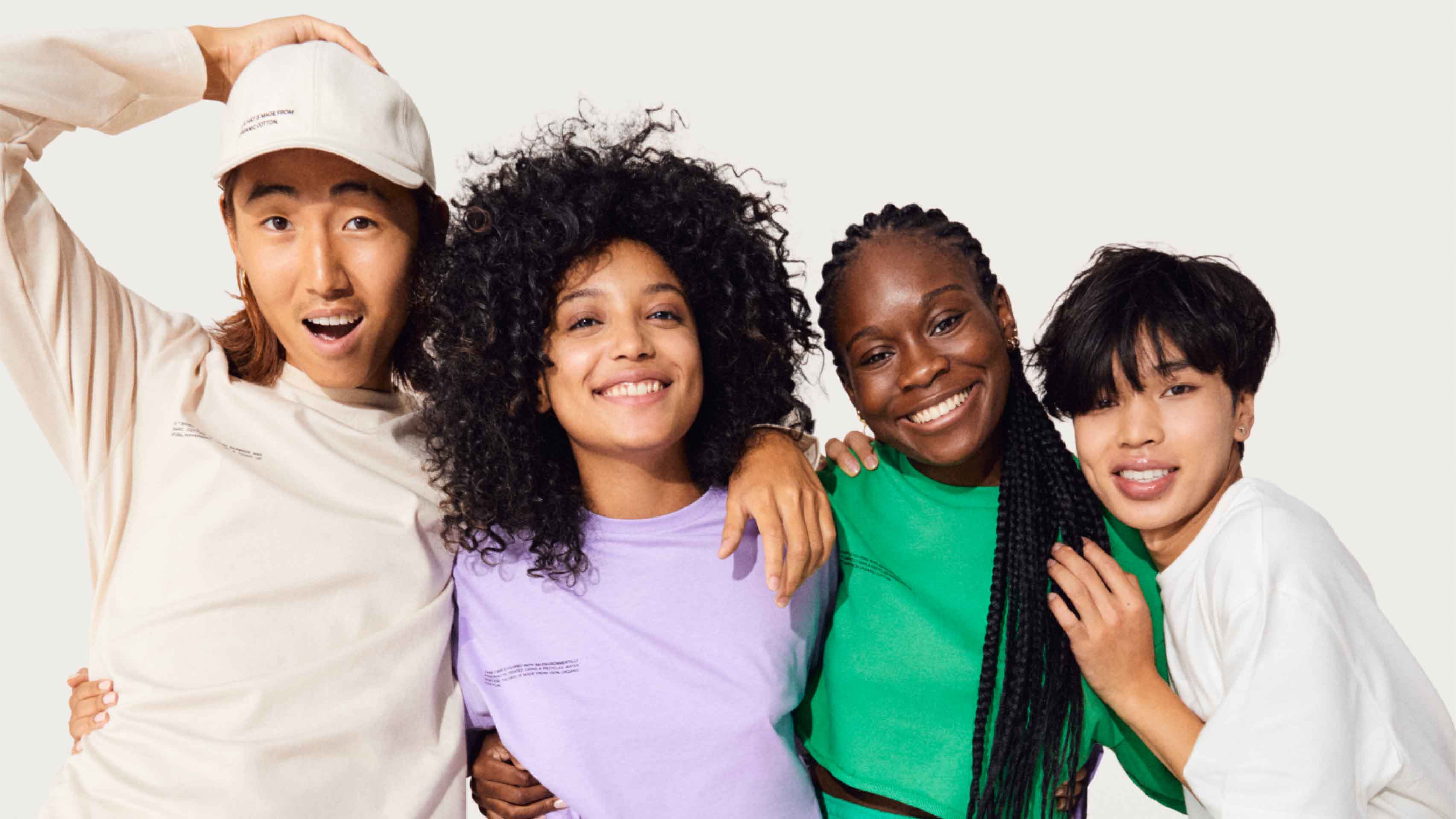
Pangaia Family Campaign; courtesy of Pangaia
Q5: If you could give a word of advice to startups on how to build a successful business whilst navigating the sustainability journey, what would it be?
I think the key thing is [to] ask so many questions along the way. As we’re emerging into this space there’s no single right answer. I know it can be really confusing but I think that the most important thing is to build direct relationships with where you’re sourcing things, ask all the questions about the science and production and make sure you really understand it. If you don’t, then do the research and find out. The more people are informed along the way the better the product will be.